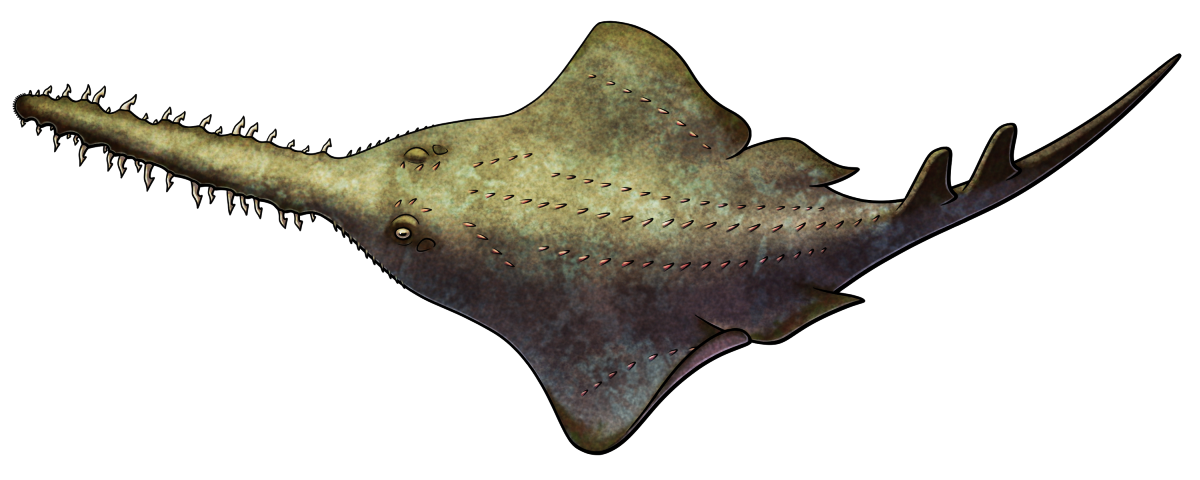Long flattened snouts lined with pointy tooth-like denticles have convergently evolved at least three separate times in cartilaginous fish: in modern sawsharks and sawfish, and in the extinct sawskates.
This repeated “pristification” suggests that saws are just incredibly useful and relatively “easy to evolve” structures for these types of fish, being both highly sensitive to bioelectric fields and able to physically slash and stab to kill prey.
Onchopristis numida was a sawskate known from what is now Northern and Western Africa during the mid-Cretaceous, about 95 million years ago. Up to about 3m long (~10′), it lived in both saltwater and freshwater, and was probably a bottom-dwelling ambush predator similar to modern angelsharks.
Whenever a denticle was lost from its saw, a larger one would grow to replace it, and over the life of an Onchopristis this resulted in an increasingly extreme amount of saw asymmetry.
Modern pristified fish also have rather asymmetrical saws. Sawfish are commonly born with a different number of denticles on each side, while sawsharks add extra denticles of varying sizes as they age, with the ongoing replacement of lost denticles resulting in more uneven arrangements over their course of their lives.
It’s not clear if the asymmetry gives any sort of advantage to these fish – but if nothing else it probably doesn’t cause them any disadvantage, so there’s no evolutionary pressure to stay more symmetrical.

